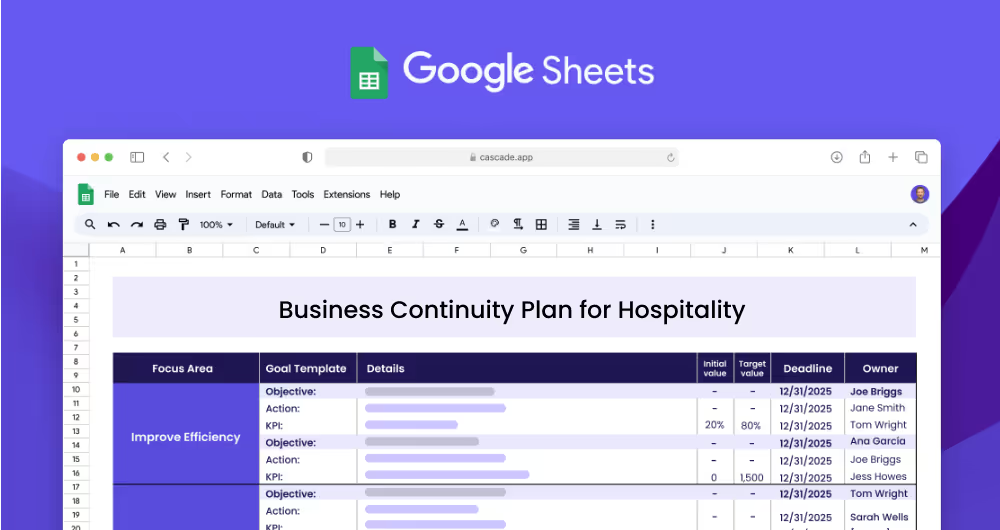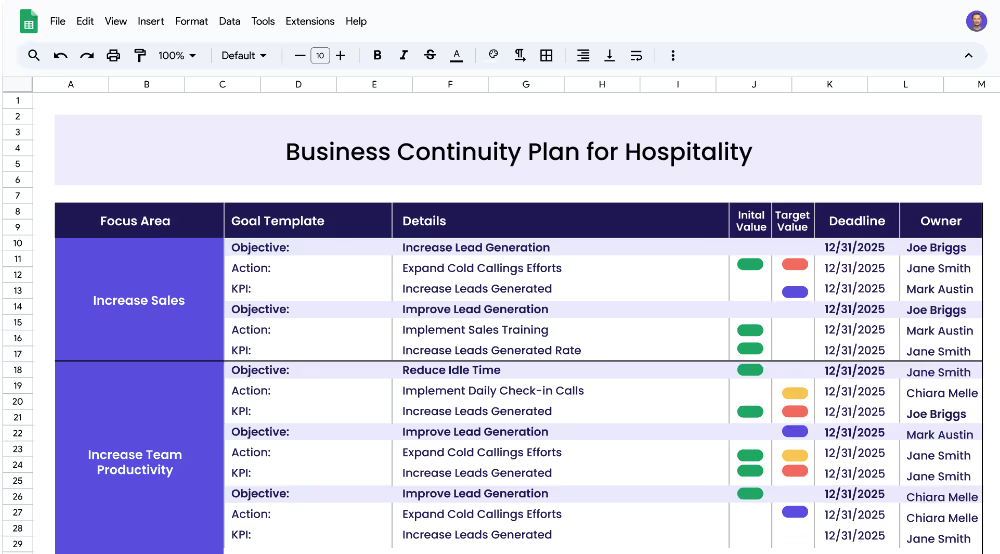A business continuity plan for hospitality is a strategic plan that outlines the steps a hospitality business needs to take to ensure continuity of guest services, reservations, and operations during any disruptions or crises. This plan helps hospitality businesses prepare for any unforeseen events and ensure that guests are not inconvenienced during these events.
Each focus area has its own objectives, projects, and KPIs to ensure that the strategy is comprehensive and effective.
This plan is designed for hotels, resorts, and other hospitality businesses that want to ensure the continuity of their operations during any disruption or crisis. This template helps businesses create a comprehensive business continuity plan that covers all aspects of their operations and provides them with the knowledge and strategies they need to prepare for any potential disruptions.
A focus area is a broad category of objectives that the business needs to achieve in order to meet its strategic goals. It can be an overarching goal, such as improving customer service or increasing reservations, or it can be a more specific goal, such as reducing energy consumption or increasing online reservations. It is important to clearly define your focus areas so that you can identify the objectives that need to be achieved in order to meet your goals.
Once you have identified your focus areas, you can start thinking about the objectives that you need to achieve in order to meet your goals. An objective is a specific target that the business needs to reach in order to meet the focus area's goal. For example, if the focus area is to improve customer service, the objectives might include increasing customer satisfaction, training staff on customer service, and improving quality of services.
KPIs, or key performance indicators, are measurable targets that can be used to track progress towards an objective. For example, if the objective is to increase customer satisfaction, the KPI might be to increase the customer satisfaction score from 3.5 to 4.5. It is important to set measurable targets for each objective so that you can track and measure your progress.
Once the KPIs have been set, the next step is to implement related projects in order to achieve those KPIs. A project is an action plan that outlines the steps that need to be taken in order to achieve the KPI. For example, if the KPI is to increase customer satisfaction, the project might include utilizing feedback surveys or training staff on customer service.
Ready to accelerate the success of your strategy? Cascade Strategy Execution Software furnishes an all-encompassing, dynamic platform that transcends the limitations of manual spreadsheets. By offering real-time updates, centralized collaboration, and automated reporting, Cascade ensures that your team can efficiently track progress, adapt swiftly to changes, and maintain strategic alignment. Elevate your strategic execution with Cascade's visual dashboards that integrate planning seamlessly with execution. Sign-up for free or book a demo with one of our strategy experts today!


